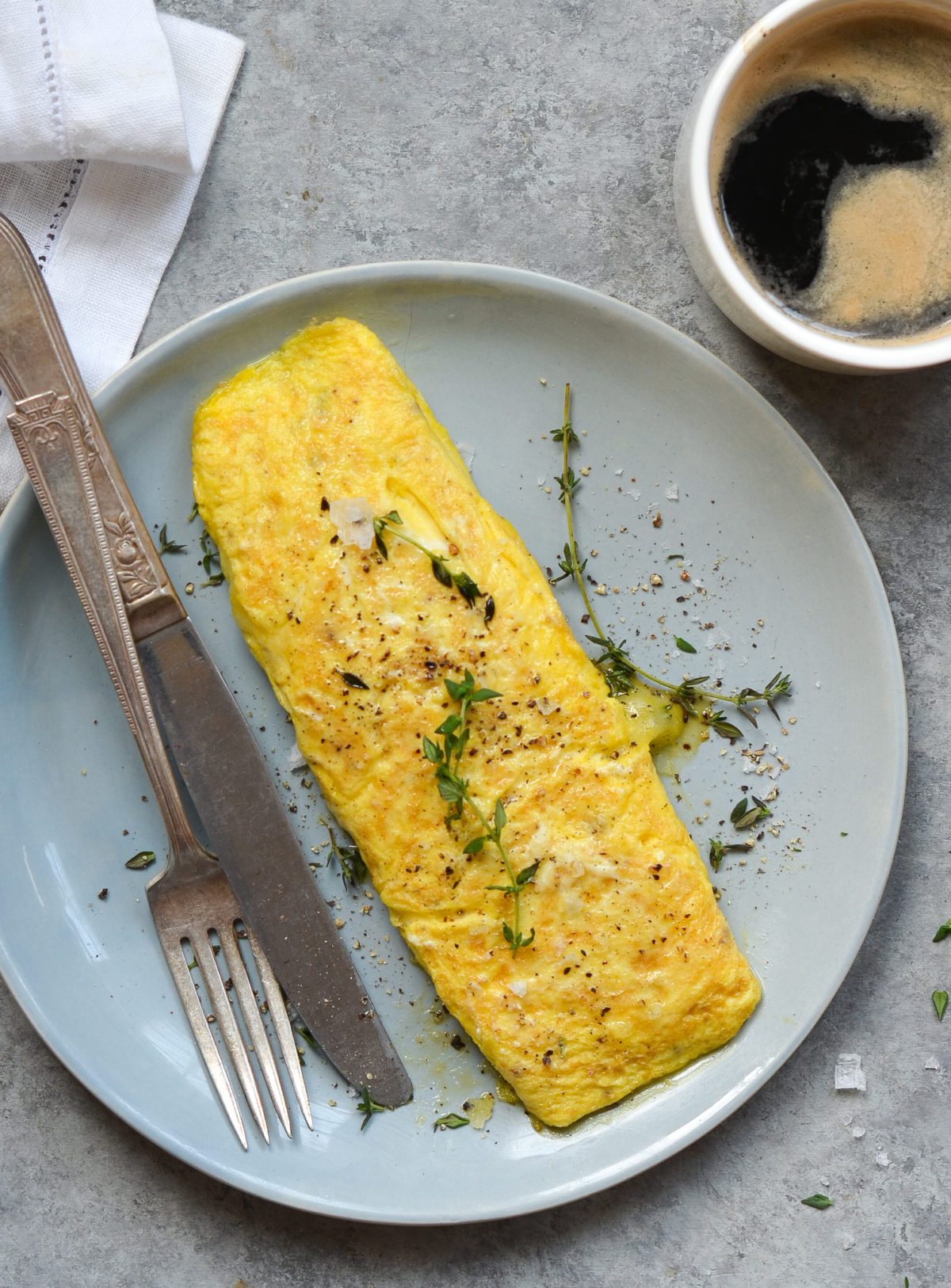If you’ve ever tried making a Perfect omelette and ended up with something tough, dry, or just plain disappointing, you’re not alone. But what if you could learn the secrets chefs use to create that perfectly soft, fluffy, and flavorful omelette every time?
Imagine starting your day with a restaurant-quality omelette that’s quick to make and impressively delicious. In this guide, you’ll discover simple yet powerful tips and tricks that will transform your omelette game forever. Ready to unlock the chef’s secrets and make the perfect omelette in your own kitchen?
Keep reading—you’re about to become an omelette master.

Credit: www.youtube.com
Choosing Eggs
Choosing the right eggs is essential for making a perfect omelette. Eggs vary in freshness and temperature, which affect texture and flavor. Picking the best eggs can make your omelette tender and delicious. Learn how freshness and temperature influence your cooking results.
Top rated products
-
25 Recipes of A Taste of China
$5.00 -
E-Cookbooks: Barbecue Recipe Sampler – 50 Mouthwatering BBQ Dishes for Every Grill Lover
$10.00 -
100 Frozen Dessert & Ice Cream Recipes
$10.00 -
Vegetarian Dishes of Latin America – 35 Flavorful Meat-Free Recipes from Across the Continent
Original price was: $20.00.$10.00Current price is: $10.00. -
The Professional Pizza Guide – Master the Art of Perfect Pizza Making
$10.00
Fresh Vs. Older Eggs
Fresh eggs have firmer whites and yolks. They hold together better when whisked. This results in a fluffier omelette with a smooth texture. Older eggs become watery and thin. They may not rise well and can make the omelette flat. Always check the pack date or buy eggs from a trusted source. Fresh eggs give a better cooking experience and taste.
Room Temperature Benefits
Using eggs at room temperature improves cooking. Cold eggs from the fridge can cook unevenly. They may cause your omelette to be tough or rubbery. Let eggs sit out for 15-20 minutes before cooking. Room temperature eggs blend more easily with other ingredients. This helps create a light and creamy omelette. It also cooks faster and more evenly in the pan.
Essential Ingredients
Creating the perfect omelette starts with choosing the right ingredients. Each component impacts the taste, texture, and overall quality. Understanding essential ingredients helps you cook a delicious, fluffy omelette every time. This section breaks down key ingredients to use and chef tips to enhance flavor.
Butter And Oil Choices
Butter gives a rich, creamy flavor and helps brown the omelette gently. Use unsalted butter for better control over salt levels. Oil, like olive or vegetable oil, offers a neutral taste and higher smoke point. Some chefs blend butter and oil to balance flavor and cooking temperature. Avoid strong-flavored oils that can overpower the eggs.
Seasonings And Add-ins
Salt and pepper are classic seasonings that bring out the eggs’ natural flavor. Fresh herbs like chives, parsley, or thyme add brightness and aroma. Cheese is a popular add-in; cheddar, Swiss, or goat cheese melt nicely. Vegetables such as mushrooms, bell peppers, or spinach add texture and nutrition. Keep add-ins simple to avoid weighing down the omelette.
Chef’s Secret Ingredients
Many chefs use a pinch of cream of tartar to make eggs fluffier. A small splash of milk or cream also softens the texture. Some add a touch of Dijon mustard for subtle tang and depth. Using fresh, high-quality eggs improves taste and color. These small touches create a restaurant-quality omelette at home.
Tools And Equipment
Having the right tools makes crafting the perfect omelette easier. The right equipment controls cooking and enhances texture. Choosing good tools helps avoid sticking and burning. Prepare your kitchen with essential items before cooking.
Best Pan Types
Nonstick pans are ideal for omelettes. They allow eggs to slide easily without sticking. A small pan, about 8 inches wide, works best. Heavy-bottomed pans distribute heat evenly. Avoid pans that are too large; eggs cook better in smaller space.
Cast iron pans hold heat well but need seasoning. Stainless steel pans require more oil but can give a nice browning. For beginners, a quality nonstick pan is the safest choice. It helps keep the omelette soft and intact.
Utensils For Mixing And Cooking
A fork or whisk works well for beating eggs. Whisking adds air for a fluffy texture. Use a silicone or wooden spatula to cook and fold the omelette. These tools are gentle on nonstick surfaces and flexible enough to shape the eggs.
A small bowl is useful for mixing ingredients evenly. Measuring spoons help add salt or seasoning in the right amount. Keep all utensils clean and dry to maintain food safety and taste.

Credit: www.onceuponachef.com
Preparing The Eggs
Preparing the eggs is the first key step in making a perfect omelette. The way you handle eggs directly affects the texture and taste of your dish. Proper preparation helps create a fluffy, tender omelette that melts in your mouth. It starts with how you beat the eggs, the ingredients you add, and how you season them. These small details make a big difference.
Beating Techniques
Beat the eggs gently with a fork or whisk. Use a circular motion to combine yolks and whites evenly. Avoid over-beating; this can make eggs tough. Stop once the mixture looks smooth and slightly frothy. This method traps air, creating lightness in the omelette.
Adding Cream Of Tartar For Fluffiness
Add a pinch of cream of tartar to the eggs before beating. This natural powder helps stabilize the egg whites. It keeps the mixture airy and prevents it from collapsing. The result is a soft, fluffy omelette with a delicate texture.
Proper Seasoning
Season the eggs with salt and pepper before cooking. Salt enhances the natural flavor of eggs. Pepper adds a mild kick without overpowering. Mix the seasoning gently into the eggs for even taste. Avoid adding seasoning too late; it may affect texture.
Cooking Techniques
Cooking techniques play a crucial role in making a perfect omelette. Precise heat control, proper butter melting, and timing the stir are essential. These steps ensure a fluffy, tender texture without burning or overcooking. Understanding these methods helps you cook omelettes like a chef every time.
Heat Control Tips
Start with medium-low heat to avoid burning the eggs. High heat cooks the omelette too fast and makes it tough. Low heat allows the eggs to cook evenly and stay creamy. Adjust the heat slightly if the eggs cook too slowly or brown too quickly.
Melting Butter Perfectly
Use unsalted butter for better flavor control. Melt the butter slowly on medium-low heat. Swirl the pan to coat the surface evenly. Avoid browning the butter, as it changes the taste and texture. The right melted butter helps the omelette slide out easily and taste rich.
When To Stir And When To Let Set
Pour eggs into the pan and let them sit for a few seconds. Stir gently only at the edges to move uncooked eggs inward. Stop stirring when the eggs start to set but still look soft on top. Let the omelette cook undisturbed to form a smooth, tender surface before folding or serving.
Folding And Serving
Folding and serving an omelette adds the final touch to your cooking. This step shapes the omelette and sets its texture. A well-folded omelette looks inviting and tastes delightful. Serving it properly enhances the overall experience.
Folding Styles
Try the classic half-moon fold by gently lifting one edge. Fold it over the other side with a spatula. For a French-style roll, start at one edge and roll the omelette carefully. Another option is the tri-fold, folding the omelette into thirds like a letter.
Each style changes the look and feel. Choose one that matches your fillings and pan size. Use a non-stick spatula to avoid breaking the eggs. Folding while the omelette is slightly runny inside keeps it soft.
Plating Tips
Slide the omelette onto a warm plate using the spatula. Wipe the edges of the plate for a clean presentation. Add a sprinkle of fresh herbs for color and aroma. Place the omelette slightly off-center for a stylish look.
Use a plate size that fits the omelette without crowding. Avoid stacking other foods on top to keep the shape intact. A drizzle of sauce or a small side salad can brighten the plate.
Serving Suggestions
Serve your omelette immediately to enjoy its warm, soft texture. Pair it with toasted bread or a light green salad. Fresh tomatoes or avocado slices add freshness and balance flavors. A simple cup of coffee or tea complements the meal well.
For a richer meal, include bacon, sausage, or grilled vegetables on the side. Keep the portions moderate to maintain the omelette as the star. Presentation and accompaniments complete the perfect omelette experience.
Common Mistakes To Avoid
Making an omelette is simple, but many people make mistakes that affect the taste and texture. Avoiding these common errors helps create a soft, fluffy, and tasty omelette every time. Knowing what to watch out for saves you time and frustration in the kitchen.
Overcooking
Overcooking makes your omelette dry and rubbery. Eggs become tough when cooked too long. Remove the omelette from heat while it is still slightly soft. The residual heat will finish cooking it gently. This keeps the texture creamy and light.
Using Too High Heat
High heat cooks eggs too fast and burns them. It also prevents even cooking inside. Use medium or low heat for a smooth and tender omelette. Cooking slowly helps the eggs set gently without browning or sticking.
Skipping Key Ingredients
Some ingredients are essential for flavor and texture. Butter adds richness and helps prevent sticking. Salt enhances taste and should be added before cooking. Fresh herbs bring aroma and brightness. Skipping these makes the omelette bland and less enjoyable.
Variations To Try
Exploring different omelette styles adds fun to your cooking. Each version brings unique tastes and textures. Trying new fillings and techniques makes breakfast exciting. Here are some tasty variations to try at home.
French Omelette
The French omelette is smooth and tender. It cooks on low heat for a creamy texture. Use butter for a rich flavor. Gently fold the eggs into a neat roll. Fresh herbs like chives or parsley add a nice touch. This omelette is simple but elegant.
Chorizo And Cheese
Chorizo and cheese create a bold, spicy omelette. Cook chorizo first to release its oils. Add shredded cheese like cheddar or Monterey Jack. The melted cheese balances the spicy sausage. This version is hearty and full of flavor. Great for a filling breakfast or brunch.
Vegetarian Options
Vegetarian omelettes offer fresh and healthy choices. Use vegetables like spinach, tomatoes, and bell peppers. Mushrooms and onions add savory depth. For extra protein, add beans or tofu. Sprinkle with your favorite cheese or herbs. These omelettes are colorful and tasty for any meal.
Chef Tips And Tricks
Perfecting an omelette takes more than just eggs and heat. Chefs use special tips and tricks that make their omelettes soft, flavorful, and beautifully cooked. This section reveals those insights to help you cook like a pro. Learn how to save time, enhance taste, and improve texture with simple methods.
Secrets From Professional Chefs
Use fresh eggs for the best flavor and texture. Beat eggs lightly to keep them fluffy, not frothy. Cook the omelette on low heat to avoid browning. Melt butter slowly and swirl it to coat the pan evenly. Let the eggs set a little before stirring or adding fillings. Fold gently to keep the inside tender and moist.
Time-saving Hacks
Prepare fillings like vegetables or cheese ahead of time. Use a nonstick pan to reduce sticking and clean-up time. Keep your stove at medium-low heat; it cooks eggs evenly and quickly. Cover the pan with a lid to speed up cooking without burning. Use a silicone spatula to fold and flip easily.
Enhancing Texture And Flavor
Add a pinch of salt to eggs before beating to boost taste. Mix in a little milk or cream for creaminess. Fresh herbs like chives or parsley add a bright flavor. Use butter instead of oil for a richer taste. Avoid overcooking to keep the omelette soft and smooth.

Credit: www.onceuponachef.com
Frequently Asked Questions
How Do Chefs Make Perfect Omelettes?
Chefs melt butter in a nonstick pan over medium-low heat. They pour in beaten eggs, cook gently, and fold when edges set, ensuring softness and fluffiness.
What Is The Secret Ingredient In A Great Omelette?
The secret ingredient in a great omelette is fresh butter and low heat. This ensures softness, creaminess, and a fluffy texture. Adding a pinch of cream of tartar also enhances fluffiness. Use room temperature eggs and cook gently for best results.
What Is The Trick To Making An Omelette?
The trick to making an omelette is cooking eggs gently over medium-low heat. Use butter, avoid overcooking, and fold softly.
What Does Gordon Ramsay Put In His Omelette?
Gordon Ramsay puts eggs, butter, salt, and pepper in his omelette. He often adds fresh herbs or cheese for extra flavor.
Conclusion
Perfecting an omelette takes practice and patience. Use fresh eggs and low heat for softness. Add simple ingredients to enhance flavor. Gently fold the omelette for a neat finish. Enjoy your meal, knowing you cooked like a chef. Keep trying; each omelette will taste better.
Cooking can be easy and fun with these tips. Now, go create your perfect omelette today!








